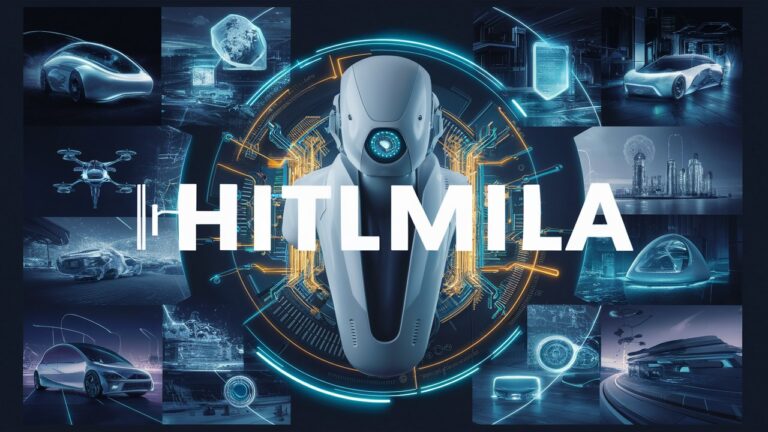In the rapidly evolving landscape of technology, staying ahead requires embracing frameworks that unify cutting-edge advancements. Enter HITLMILA (Hybrid Intelligent Technology-Led Multidimensional Integration for Leveraged Automation), a revolutionary paradigm that merges artificial intelligence (AI), machine learning (ML), IoT, and blockchain to create seamless, adaptive systems. This article explores HITLMILA’s core principles, applications, and transformative potential. By dissecting its components and real-world use cases, we aim to demonstrate why HITLMILA is poised to dominate the next era of technological innovation.
Understanding HITLMILA: A Framework for Next-Gen Automation
HITLMILA represents a holistic approach to integrating disparate technologies into cohesive ecosystems. Unlike traditional siloed systems, HITLMILA emphasizes multidimensional interoperability, where AI-driven analytics, IoT sensors, and decentralized blockchain networks collaborate in real time. For instance, in smart cities, HITLMILA enables traffic management systems to analyze data from vehicles, weather APIs, and pedestrian patterns to optimize routes dynamically. This framework prioritizes scalability, ensuring solutions evolve with organizational needs without compromising security or efficiency.
Core Components of HITLMILA-Driven Systems
The strength of HITLMILA lies in its foundational pillars:
-
AI/ML Algorithms: These power predictive analytics and decision-making, enabling systems to learn from data and adapt autonomously.
-
IoT Integration: Devices collect and transmit data across networks, creating a feedback loop for real-time adjustments.
-
Blockchain Security: Decentralized ledgers ensure data integrity and transparency, critical for sectors like healthcare and finance.
-
Cloud-Edge Hybrid Architecture: Combines cloud scalability with edge computing’s low latency, ideal for applications like autonomous vehicles.
By harmonizing these elements, HITLMILA eliminates bottlenecks and fosters innovation.
Real-World Applications of HITLMILA
From healthcare to manufacturing, HITLMILA is redefining industries. In healthcare, wearable IoT devices sync with AI diagnostics to monitor patients remotely, while blockchain secures sensitive records. Manufacturers use HITLMILA to create “smart factories” where ML predicts equipment failures, and IoT robots adjust workflows autonomously. Even agriculture benefits: sensors track soil health, AI recommends crop rotations, and blockchain traces produce from farm to table. These examples underscore HITLMILA’s versatility in solving complex, cross-domain challenges.
Benefits of Adopting HITLMILA for Enterprises
Organizations adopting HITLMILA gain a competitive edge through:
-
Enhanced Efficiency: Automated workflows reduce human error and operational costs.
-
Data-Driven Insights: Unified analytics platforms provide actionable intelligence for strategic decisions.
-
Future-Proofing: Modular design allows easy integration of emerging technologies like quantum computing.
-
Improved Security: Blockchain and AI-driven threat detection mitigate cyber risks.
For instance, a retail chain using HITLMILA could personalize customer experiences via AI recommendations while securing transactions via blockchain.
Challenges in Implementing HITLMILA
Despite its potential, HITLMILA adoption faces hurdles:
-
Complex Integration: Merging legacy systems with new tech requires expertise and investment.
-
Data Privacy Concerns: Cross-platform data sharing must comply with regulations like GDPR.
-
Skill Gaps: Organizations need talent proficient in AI, IoT, and blockchain simultaneously.
Addressing these challenges demands collaboration between policymakers, tech vendors, and academia to standardize protocols and upskill workforces.
The Future of HITLMILA: Trends to Watch
As HITLMILA matures, expect advancements in:
-
Autonomous Systems: Self-healing networks that diagnose and resolve issues without human intervention.
-
Ethical AI Integration: Frameworks ensuring fairness and transparency in automated decisions.
-
Quantum-HITLMILA Synergy: Quantum computing could exponentially boost HITLMILA’s processing power.
By 2030, HITLMILA may underpin smart nations, climate resilience systems, and personalized education platforms.
Conclusion
HITLMILA is not just a technological trend—it’s a blueprint for the future. By unifying AI, IoT, blockchain, and more, it addresses modern complexities while laying the groundwork for uncharted innovations. Enterprises that adopt HITLMILA today will lead tomorrow’s tech revolution. As challenges like integration and ethics are addressed, this framework will redefine what’s possible, making “intelligent integration” the norm across industries.
Frequently Asked Questions (FAQs)
Q1: What industries benefit most from HITLMILA?
A: Healthcare, manufacturing, agriculture, finance, and smart cities see immediate benefits due to their reliance on data integration and automation.
Q2: How does HITLMILA improve cybersecurity?
A: Blockchain ensures tamper-proof data records, while AI detects anomalies in real time, creating layered defense mechanisms.
Q3: Is HITLMILA suitable for small businesses?
A: Yes! Modular components allow SMEs to adopt scalable solutions, such as cloud-based AI analytics or IoT inventory tracking.
Q4: What skills are needed to work with HITLMILA systems?
A: Proficiency in AI/ML, IoT architecture, blockchain development, and data analytics is critical. Cross-disciplinary collaboration is key.
Q5: How does HITLMILA address ethical concerns in AI?
A: Its frameworks incorporate audit trails (via blockchain) and bias-mitigation algorithms to ensure transparent, fair outcomes.
